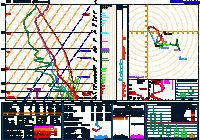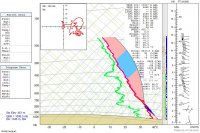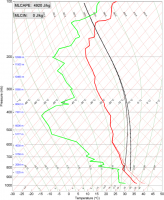Caleb Grunzke
EF2
I think the low-level shear was just too meager. The 18z DVN and ILX (image below) soundings displayed this problem pretty well. Yeah, sure there's decent turning with the winds with height but, look at the speeds.

The 00z ILX sounding (image below) showcases this problem even further. The only time storms even looked somewhat tornadic was when they were near the outflow boundary that was leftover from the morning's convection. This outflow boundary would have provided increased helicity in the low-levels.

A few people are saying that the low-levels were too dry. While that may not help the situation, it doesn't explain the tornado in Kansas (00z sounding from Hesston, KS below) as the moisture in the low-levels was similar. The deviant storm-motion of the Kansas supercell lead to increased low-level helicity. This is likely why the storm was able to produce.


The 00z ILX sounding (image below) showcases this problem even further. The only time storms even looked somewhat tornadic was when they were near the outflow boundary that was leftover from the morning's convection. This outflow boundary would have provided increased helicity in the low-levels.

A few people are saying that the low-levels were too dry. While that may not help the situation, it doesn't explain the tornado in Kansas (00z sounding from Hesston, KS below) as the moisture in the low-levels was similar. The deviant storm-motion of the Kansas supercell lead to increased low-level helicity. This is likely why the storm was able to produce.


